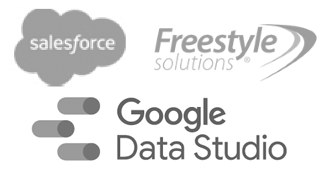In describing the challenge for multi-channel marketers, I often fall back on the old quote from John Wanamaker, the 20th century department store magnate: “Half the money I spend on advertising is wasted; the trouble is, I don’t know which half.” “Knowing which half” would certainly be the Holy Grail for modern day marketers as well, and that day may be coming soon. This week, we had the chance to speak with George Michie, Co-Founder and CEO of RKG | Rimm-Kaufman Group.
The discussion was a follow-up to our “MoneyBall for Marketers” blog post, where we shared our thoughts on the relationship between PPC and the LTV.
The conversation was apropos for direct marketers in that George comes from a catalog background (Crutchfield), and thus understands completely the interface between offline and online analytics. Here are some of the high points:
Question on LTV: DMSI has begun linking customer LTV (aggregate online and offline) with PPC keywords and keyword costs. Our thesis is that PPC bidding might change significantly, depending on the LTV of customers converted by PPC keywords. Do you consider this to be a highly valuable initiative?
Response on LTV: George felt this was definitely valuable, with a bit of a caveat. In support of this approach, his experience is that there is significant variability in LTV by keyword. However, in his past life at Crutchfield, he described how they took a more short term approach, measuring 3-month and 6-month values (I have understood this approach as “near-term value.”) For instance, his marketing group could accept a loss on the original order, in hopes of making a profit thereafter. But they could not afford to wait a lifetime to find out if the customer would be profitable. The early, near-term value results gave them trend metrics they could use to move forward. The question that we discussed is whether online shoppers have the same lifetime value longevity as offline shoppers from bygone days. In my view the jury is still out on this, but there is a lot of sentiment that describes many online shoppers as transaction buyers, looking for low price and lacking the same lifetime loyalty exhibited before the web. If this is true, near-term value may have greater significance than LTV when establishing PPC bidding.
Question on Offline Attribution: It appears the RKG’s attribution algorithm only considers online/PPC campaign results, and ignores offline campaign stimulus – is that correct?
Response on Offline Attribution: It turns out that RKG can filter both phone and mail responses. For phone, RKG’s solution allows for call-center orders to be tracked back to the individual user’s click-thru (see RKG blog post: Discovering Untracked PPC Sales). Therefore, not only can they know what keyword and search engine generated the click, but also attribute credit to the click amongst other marketing channels that they track (Email, Organic, Affiliate – with the timing and ordering of each).
For mail campaigns, RKG can import offline data feeds from campaigns that include in-home dates for mail drops. The difficulty arises with prospect mailings, where the merge/purge matchback vendors sometimes “re-write history” with their own attribution – long after the fact.
Question on COGS: Since Cost of Goods Sold is so important to a LTV calculation, is it a component of your bidding process?
Response on COGS: Yes, margin is considered in the RKG algorithm. It is captured from a feed at checkout.
 Professor’s Corner: Are we approaching the Holy Grail?
Professor’s Corner: Are we approaching the Holy Grail?
The answer seems to be a qualified “maybe” but more steps are needed. RKG made the point that they don’t see attribution alone as a complete solution; that analyzing media mix would be a more holistic approach.
In summary, the discussion above seems to address two out of three components of improved attribution, and PPC bidding:
- NTV, not LTV: LTV is not a “what have you done for me lately” concept. From the input RKG and others have provided, I expect Near-Term Value (NTV) to become the focus of our research initiative. I would also expect a 12-month window to become the default threshold for NTV analysis.
- Online/Offline Attribution: It appears RKG has developed a very reasonable approach. Other vendors are working in this space too, of course. I understand from our clients that Clearsaleing.com has a sound attribution algorithm, albeit somewhat expensive (RKG mentioned them as well).
- Linking PPC to LTV/NTV: The difficulty here is not so much LTV versus NTV: it is customer conversion versus purchase conversion. PPC algorithms specialize in linking click-thrus to orders on a 1-to-1 basis. For cases where the order is the first customer order, linking to LTV/NTV is not a problem. But lacking complete visibility into all customer transactions, how can one tell if the click-thru generates the earliest order (customer conversion), or a trailing order (purchase conversion)? At DMSI, our WiseGuys application already has pieces of this puzzle in place, and we are moving forward to incorporate remaining functionality. Some of the core functionalities already include Refresh processes (ETL from order management systems), Matchback algorithms, and LTV/NTV reporting. We would be delighted to speak with you about your immediate needs, and discuss our plans for further development in these areas!









